Andrew Gibson: An Ardent Son
Andrew Gibson (1841-1931)
Although born in Scotland, Andrew Gibson spent most of his life in Ulster. Born in the village of New Cumnock, Ayrshire in south west Scotland on 23 December 1841, he was the eldest son of William Kennedy Gibson and his wife Janet Black. Andrew Gibson married Mary Sinclair Brown in August 1869 in Glasgow. The Gibson family came to Belfast in the 1880s because Andrew was appointed as an agent for George and James Burns Ltd. in the city.
Until his retirement, he was personally responsible for all matters pertaining to the extensive passenger and goods shipping of the firm. By 1910 Gibson was the Belfast agent for both Burns and Cunard lines. The family lived at 14 Cliftonville Avenue in north Belfast until 1911, when they moved to a house called Fairfield at Lansdowne Road.
Beyond his work, Gibson had many interests and contributed in a variety of ways to the social and cultural life of his adopted city, including The Linen Hall. He was a Governor of the Library from 1894 to 1927 and played an active role in the institution. Among other works, Gibson was instrumental in the revival of the Ulster Journal of Archaeology, organising the second Belfast Harp Festival in 1903 and the Belfast Shakespeare Festival in 1905. He also served as President and Vice President of the Belfast Burns Club, where he was well known for his papers on literary subjects, and as an office bearer with the Belfast Scottish Association and the Belfast Benevolent Society of St Andrew.
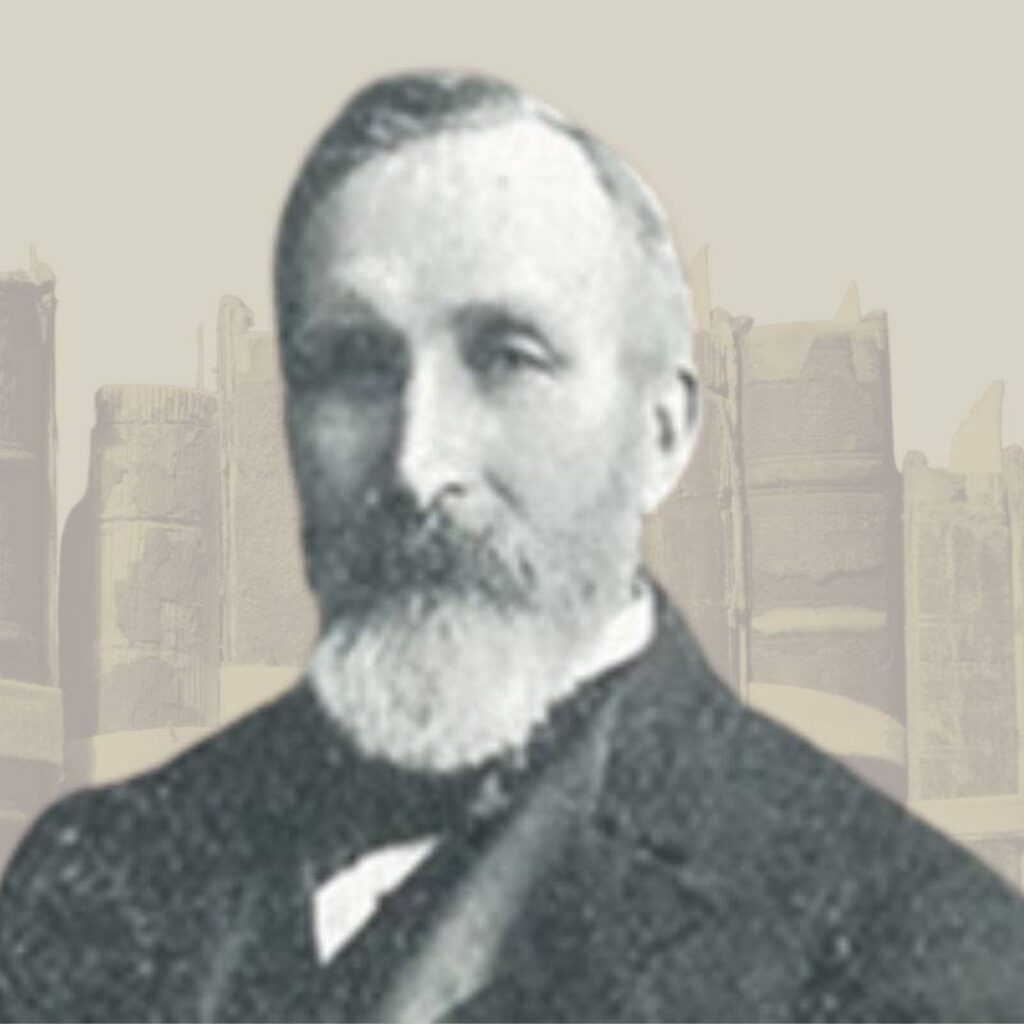
Burns & Ulster
When Andrew Gibson, a Scot living and working in Belfast, developed his collection of Burns and Burnsiana, he was reflecting not only an enthusiasm of his own but also one shared in his adopted town and province.
The first collection of Burns’s poems, entitled Poems Chiefly in the Scottish Dialect, an edition of a mere 612 copies, was published in Kilmarnock in 1786. It was intended to raise funds to help Burns to emigrate to the West Indies. However, it aroused great interest and Burn’s poems started to appear more widely.
Henry Joy’s Belfast News Letter published extracts from three poems under the heading ‘Fragments of Scotch Poetry‘ in the autumn of 1786, and a couple of weeks later a complete poem appeared in James Magee’s Belfast Evening Post. More extracts appeared at the end of the year and many of his best known poems appeared in the Belfast press in 1787.
So popular were Burns’s poems that a more substantial edition was required. The Edinburgh edition (the second edition) appeared in April 1787, and in September 1787 James Magee published the Belfast edition (the third edition), shamelessly copied from the Edinburgh edition in a smaller format and at a cheaper price. A copy of Magee’s Belfast edition is housed at The Linen Hall.
Due to the close relationship between Ulster and Scotland, many local poets were inspired by Burns. Samuel Thompson from Carngranny, who is regarded as the ‘Father of Ulster Scots Poetry’ visited Burns and dedicated his first collection of poems, Poems on Different Subjects, Partly in the Scottish Dialect, to Burns. Burns influenced other local poets, such as David Herbison, the Bard of Dunclug and James Orr, the Bard of Ballycarry, who is often regarded as ‘Ulster’s Burns’.
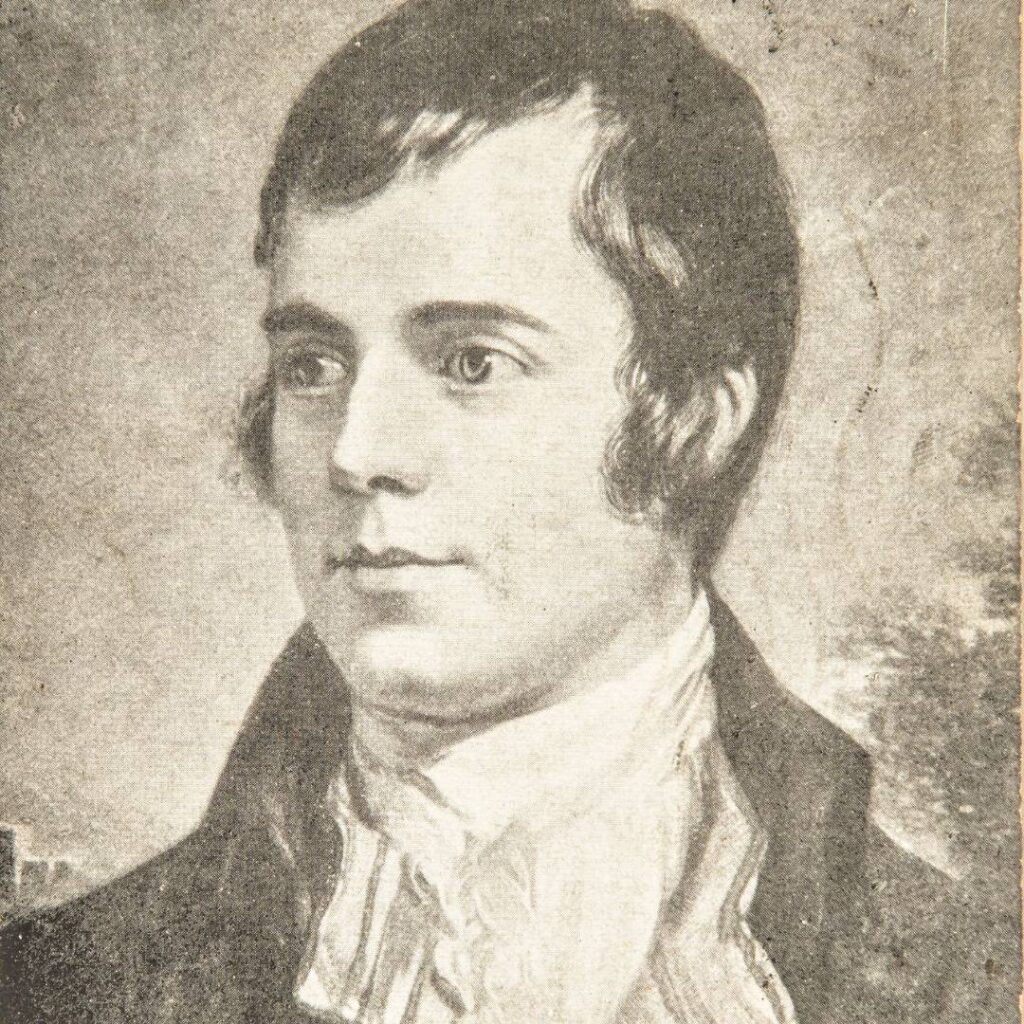
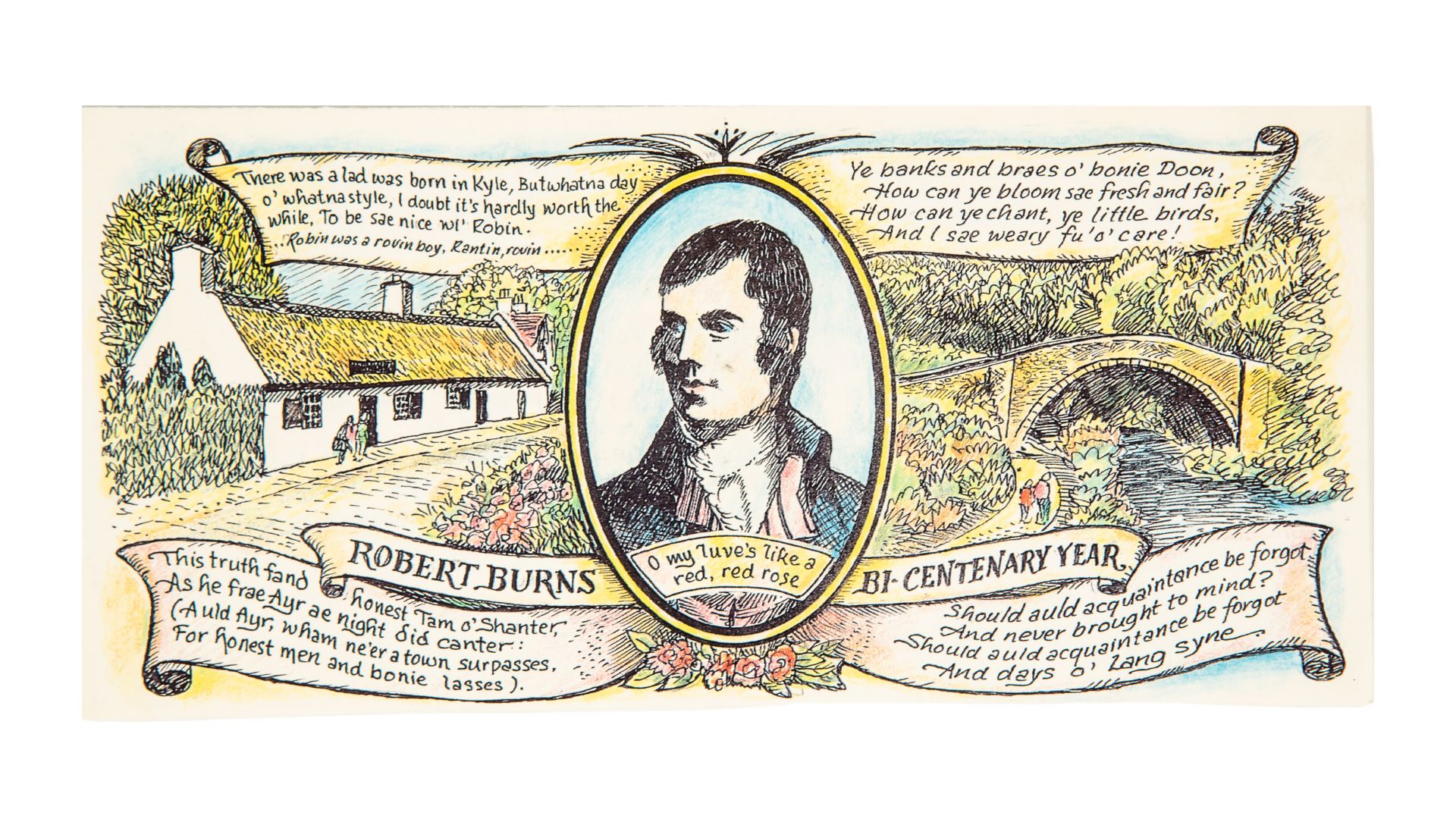
Purchase of the Gibson Collection
In 1893 a number of leading Scotsmen, including Gibson and led by James Dewar, presented to the Corporation of the city of Belfast a half-life size statue of Burns in Ayr, by George A. Lawson. The pedestal of Peterhead granite bears the following inscription: ‘Robert Burns 1759-1796, Presented by his countrymen and admirers in Belfast’.
Due to increased awareness of this fine collection, a provisional committee was set up in Belfast with the aim of acquiring the Gibson collection for the people of Belfast. At a meeting in The Linen Hall in December 1900, under the chairmanship of the Lord Mayor Sir Robert McConnell, it was agreed that ‘the collection of Burns and Burnsiana, formed by our fellow- townsman, Mr Andrew Gibson, should be acquired for the city’.
The purchase price was £1,000 and the amount was to be raised by public subscription, on the condition that the collection should be placed in The Linen Hall and kept intact, that ‘all who were interested in the life and writings of Robert Burns should have free access to it, under such reasonable restrictions as the Governors of the Library should deem to be necessary’.
Of the required sum, subscriptions amounting to 507.8.6 had been either received or promised by February 1901, and a strong effort was being made to raise the balance. The executive committee appealed for funds on the basis that the purchase would be a credit to Belfast and a benefit for the public.
The ceremony of transfer of the collection took place in the reading room of the Library on 17 December 1901, with an exhibition of the rarer items. Other items were donated at the same time by Mrs Burns Thomas, great-granddaughter of the poet, having been originally in the possession of her mother, Mrs Eliza Everitt, who was a long time resident of Belfast.
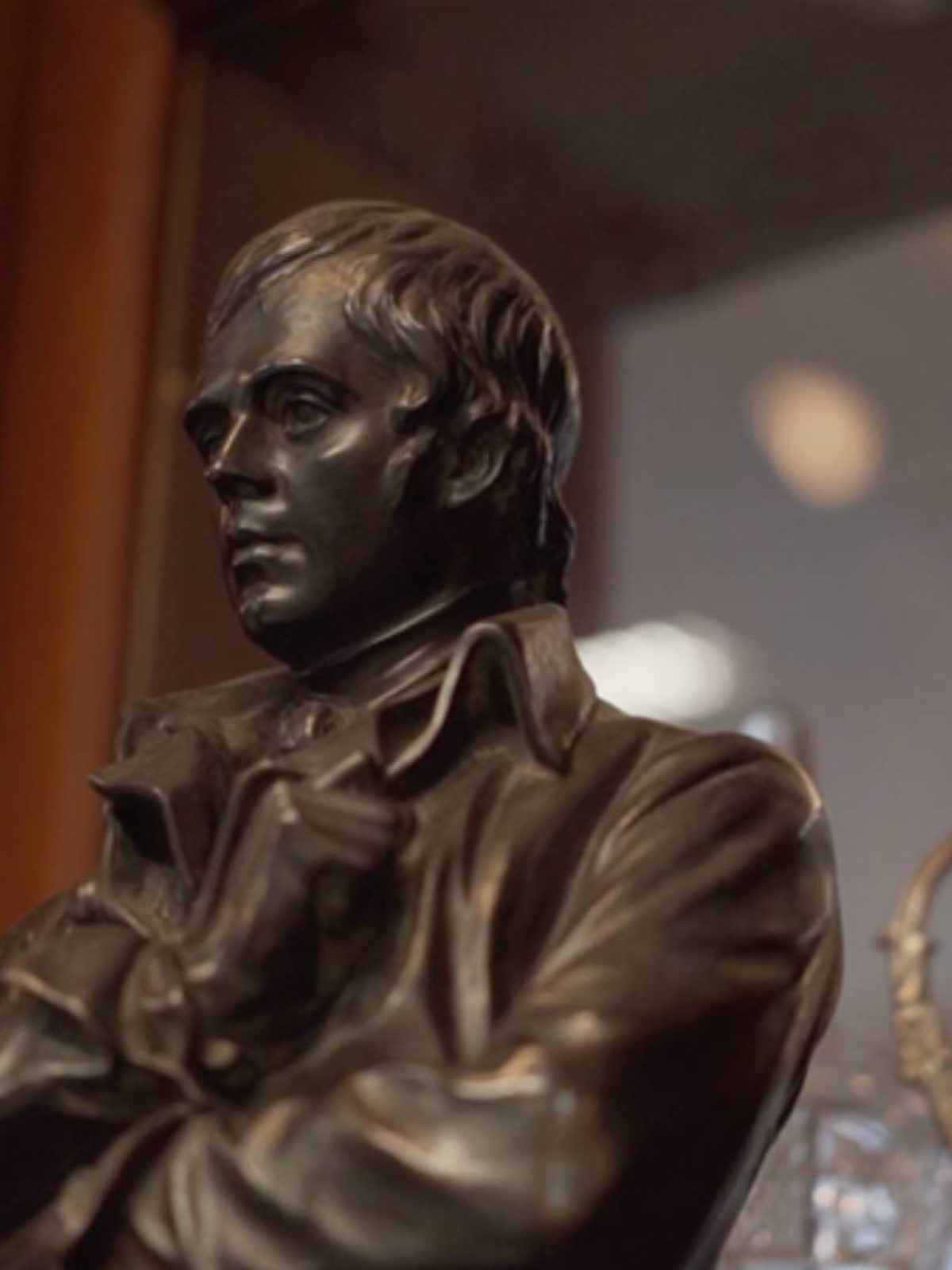
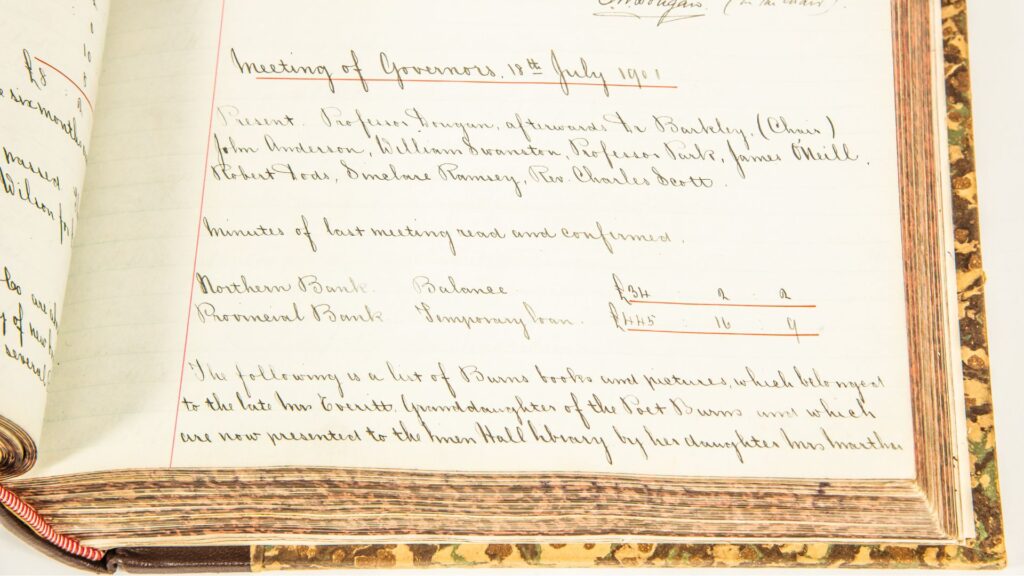
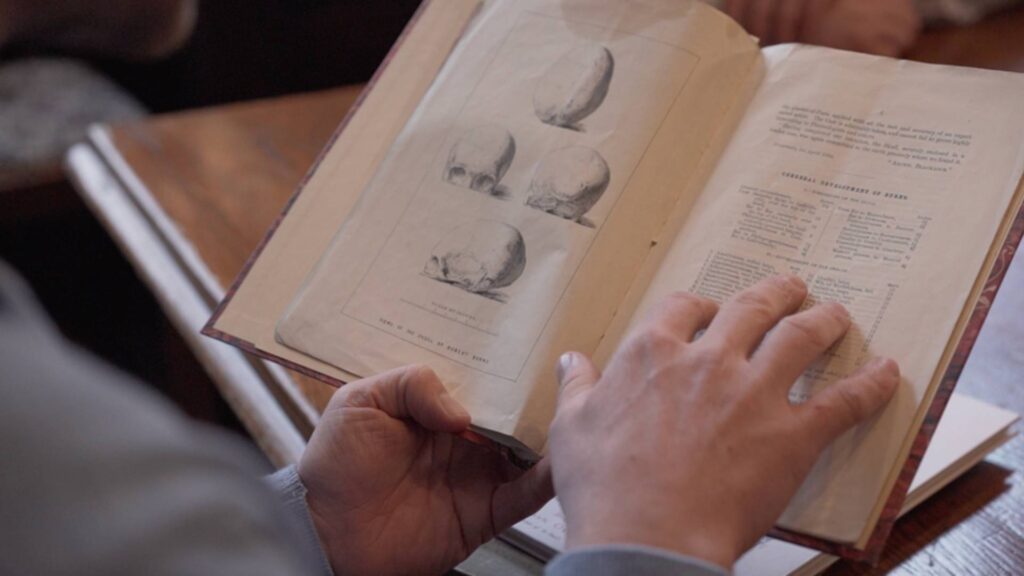
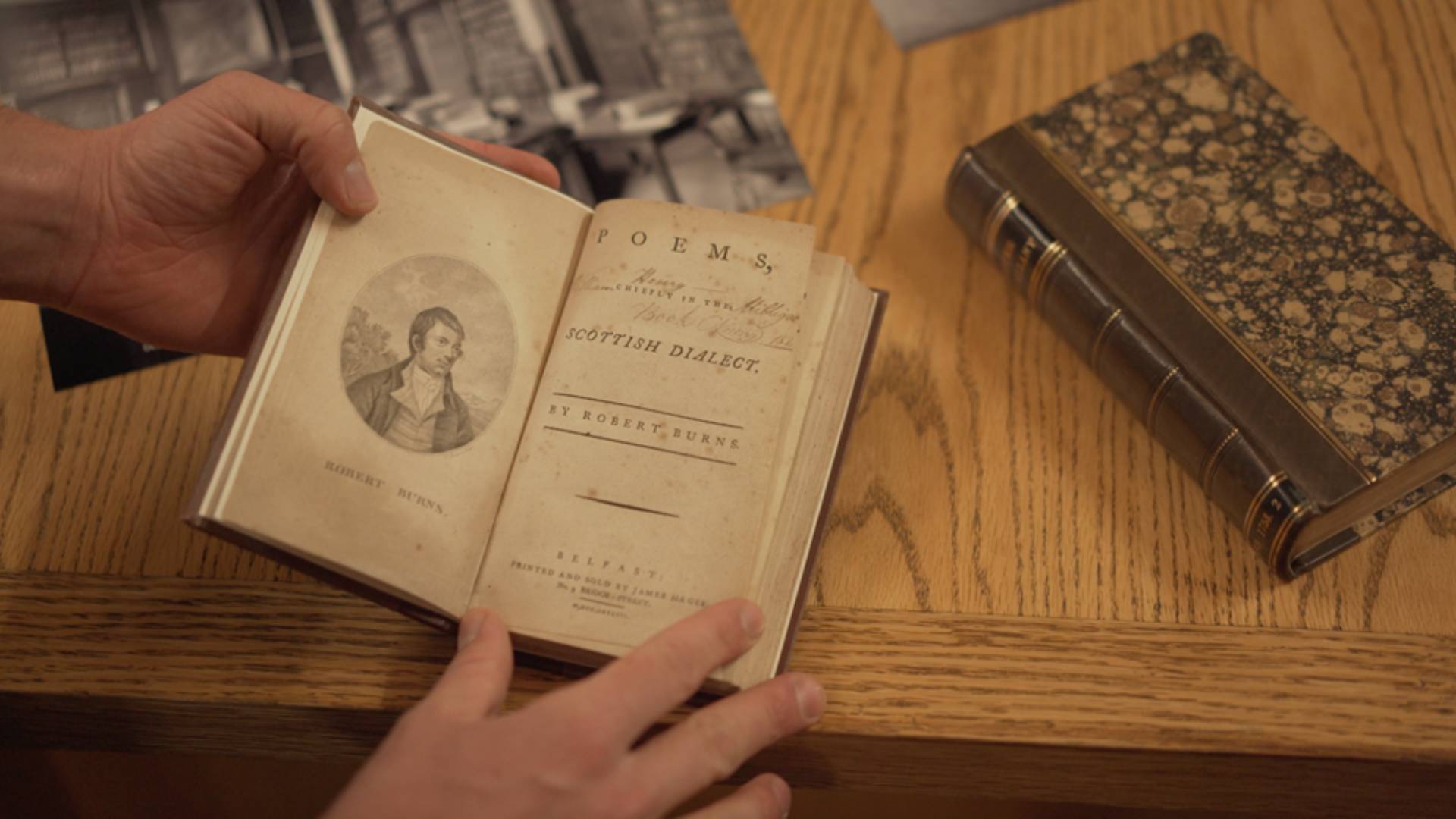
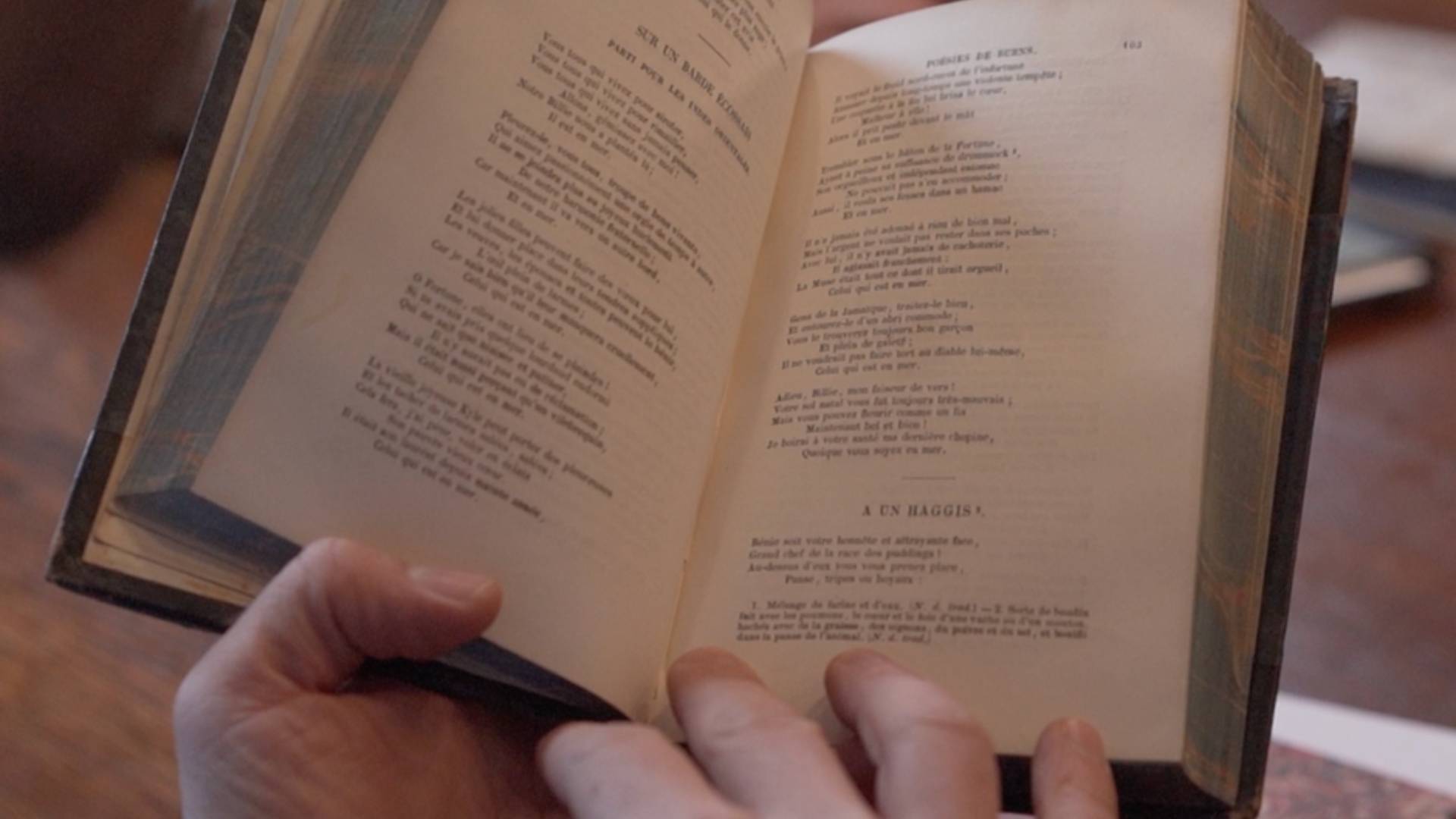
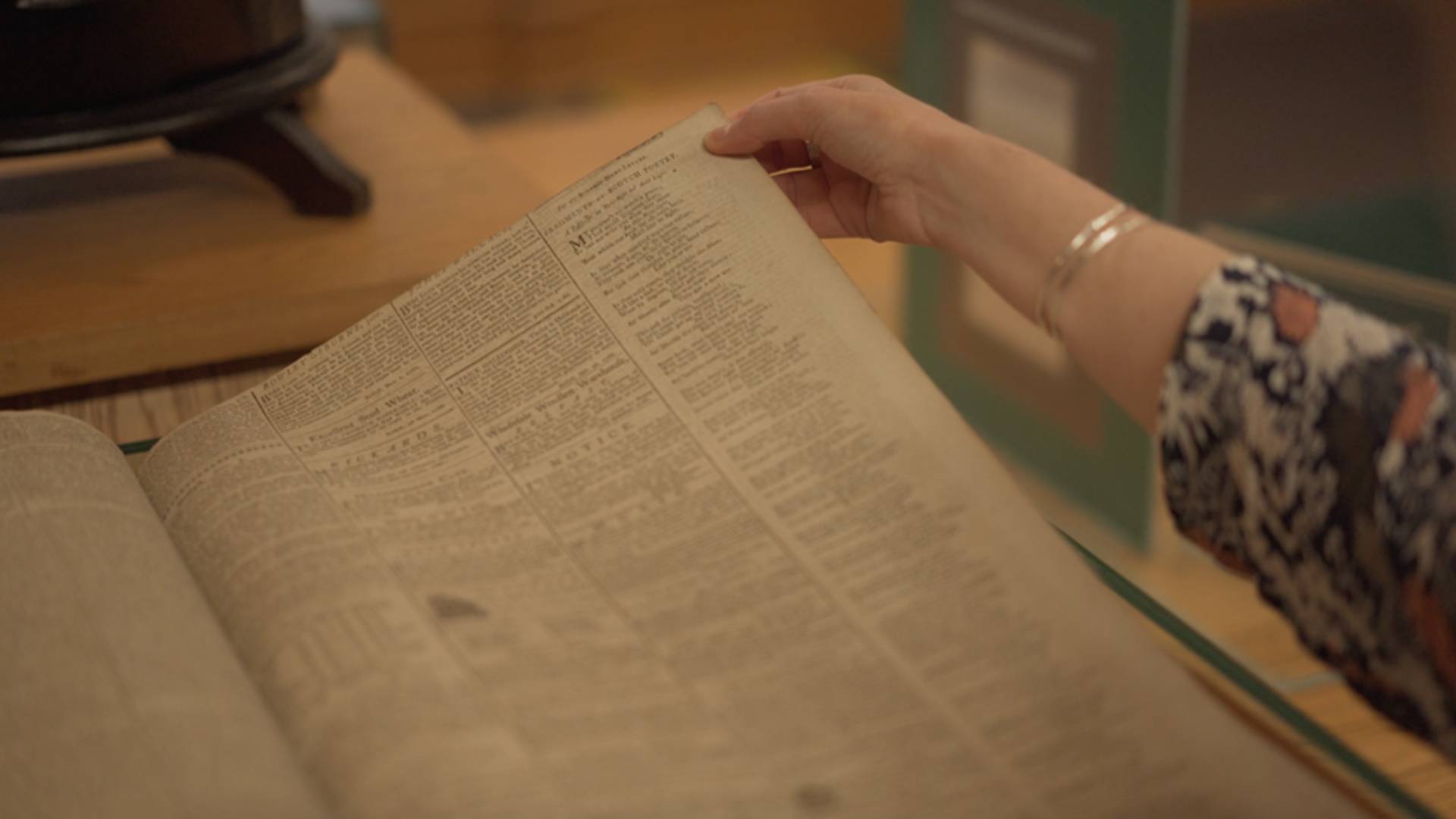
The Glasgow Exhibition
Andrew Gibson was one of the most significant collectors of literary materials in Ireland in the nineteenth century. Gibson is chiefly remembered today as a book collector and an expert on poetry. He had a magnificent library with globally important collections of Robert Burns, Thomas Moore and Allan Ramsay the Scottish poet on whom he wrote a book entitled New Light on Allan Ramsay (1927). However Gibson was especially famous as a collector of material on Burns. He spent no fewer than twenty years building up this collection which contained no less than 728 distinct editions of the works of Robert Burns, numbering in excess of one thousand volumes.
A Burns exhibition took place in Glasgow in 1896, the centenary of the poet’s death, and was planned as a tribute by the Federation of Burns Clubs. The exhibition was laid out in six huge galleries in the imposing Glasgow Institute of the Fine Arts, then in Sauchiehall Street, and ran from July to October of that year. Gibson loaned some 300 volumes for display – an important contribution. He also set up a sub-committee in Belfast to assist with sourcing further books, manuscripts and artefacts.
The Gibson collection, later transferred to The Linen Hall, includes many rare items, among them The Scots Musical Museum on which Burns collaborated with James Johnson, recovering many hundreds of folk songs.
A fine edition of Tam O’Shanter was ‘Exhibit 1275’ at the 1896 Exhibition and was later reprinted by The Linen Hall.
Also, a limited edition of The Cottar’s Saturday Night, produced by Marcus Ward, as well as an edition that was printed at the presses of the Belfast News Letter.
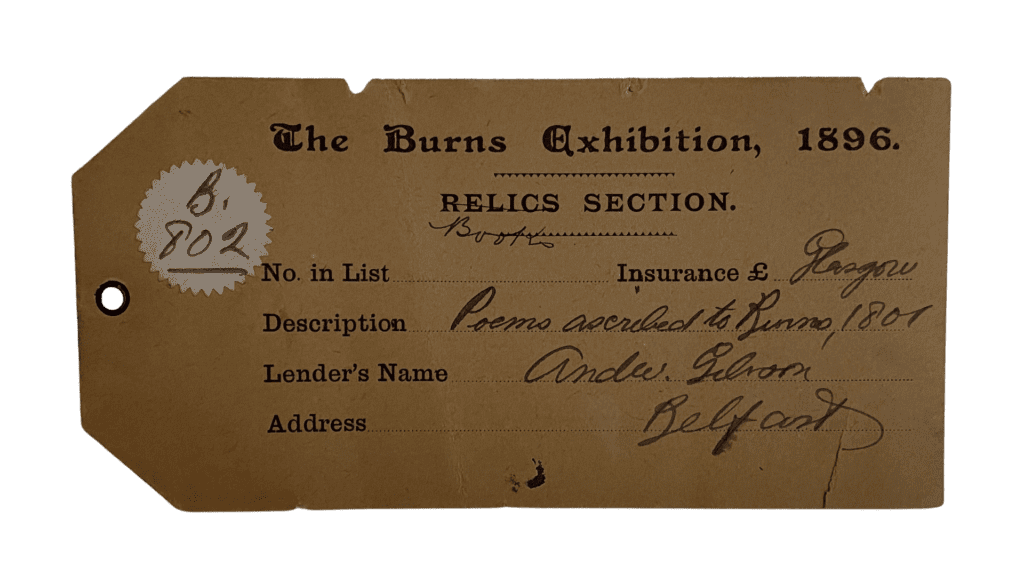
Care & Conservation
The Gibson collection is a pillar of The Linen Hall’s unique collections, and it is a central purpose of the Library to increase knowledge and understanding locally, nationally and internationally of this historical and culturally significant resource. The Linen Hall ensures the Gibson collection is celebrated, preserved and made as accessible as possible, allowing safe use and access to researchers, displaying items of interest and note which represent the variety and richness of the collection, and interpreting and bringing it to life by telling its fascinating and engaging story. The conservation of the collection benefits greatly from the partnership, support and commitment of the Ulster-Scots Agency.
Care of the collection is based on a combination of preventative and remedial conservation, both designed to ensure long term preservation. Preventative conservation covers measures necessary to slow down or minimise deterioration, and we have worked to manage and improve the preservation of the Gibson collection by best practice in care and conservation through good storage, optimum environmental conditions, and building maintenance. The highest standards of conservation are ensured through the use of professional, qualified staff and state of the art practice and materials.
Tranches of the Gibson collection have also been restored and beautifully rebound using leather, cloth and various binding materials. Treasures have been returned to their former glory, with exquisite hand tooled spines and decorative covers, all of which add to the visual and tactile pleasure of the collection.
While ongoing conservation will ensure a safe and secure future for this invaluable collection, the legacy and longevity of the Gibson collection is also enhanced by being part of the Library’s museum collections.
The custodianship and preservation of the Gibson collection for future generations is both a privilege and a responsibility, and The Linen Hall members are to be commended for supporting, through their membership, the maintenance and upkeep of this collection.
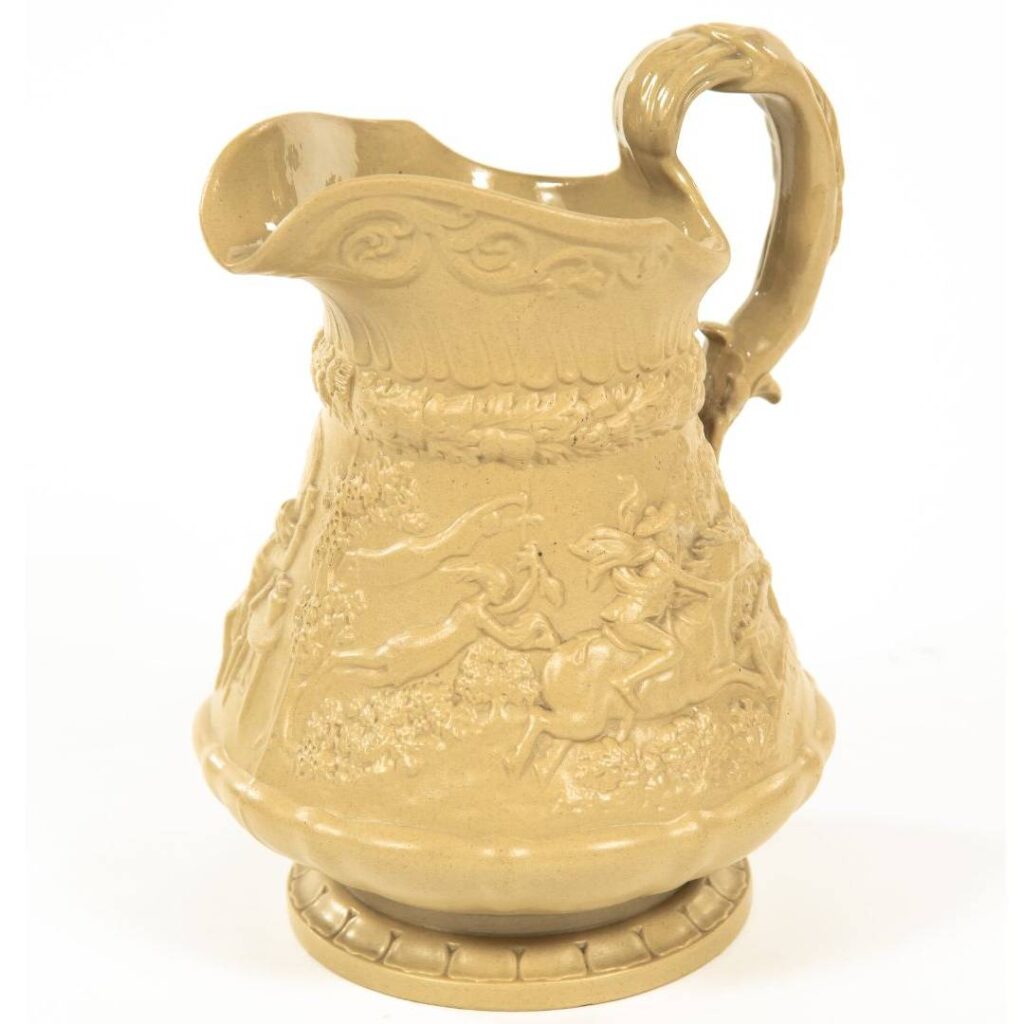
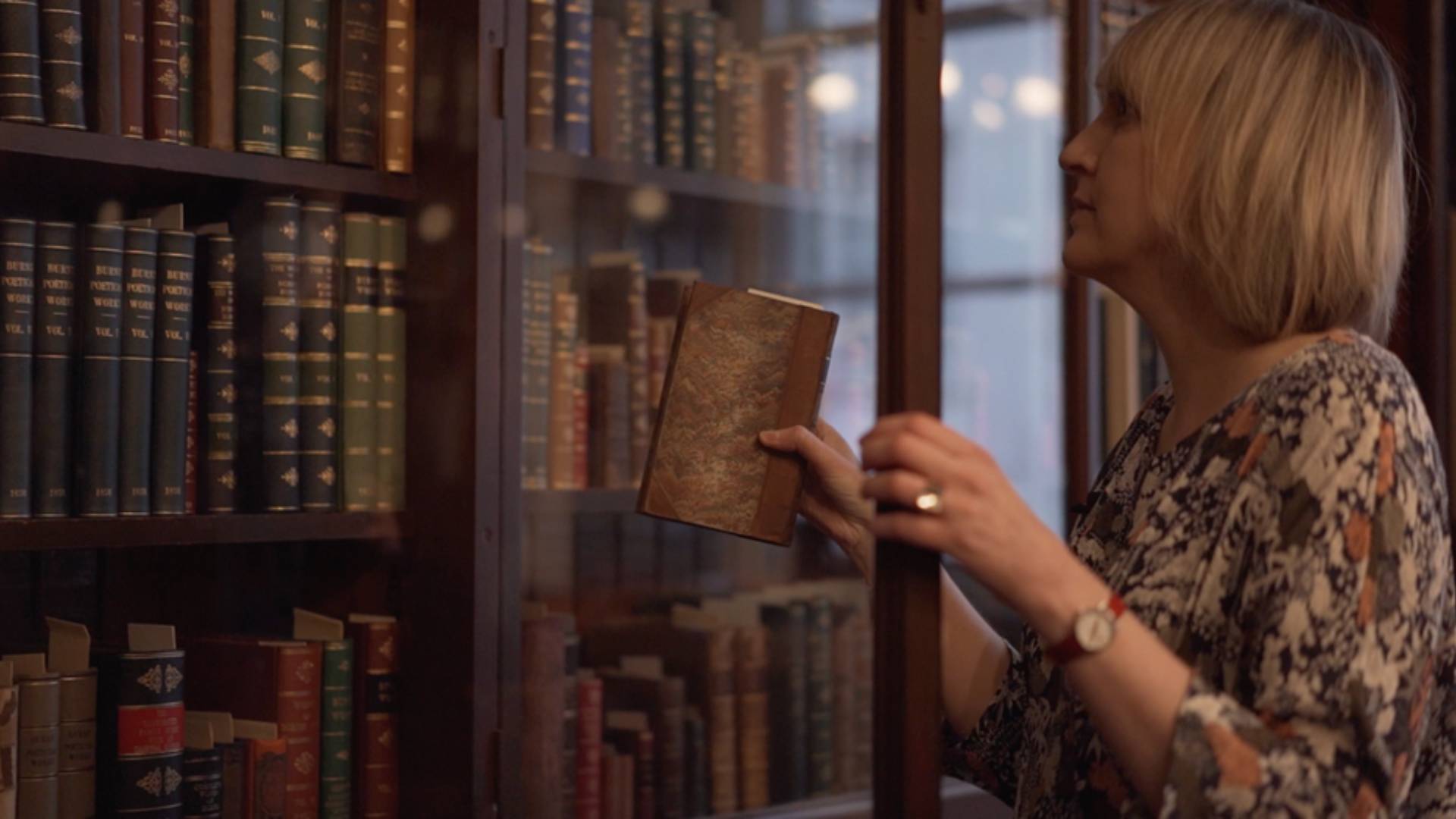
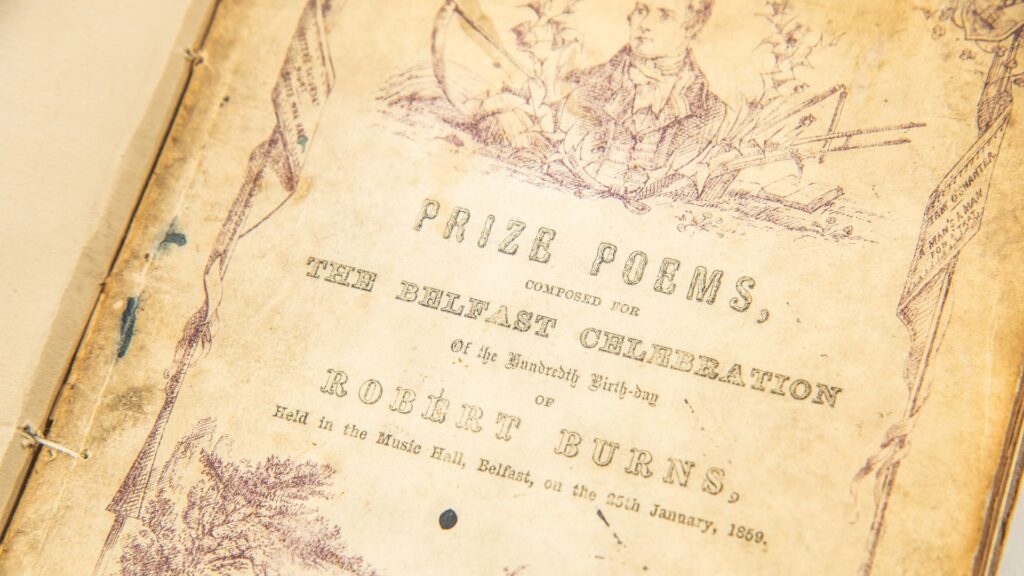
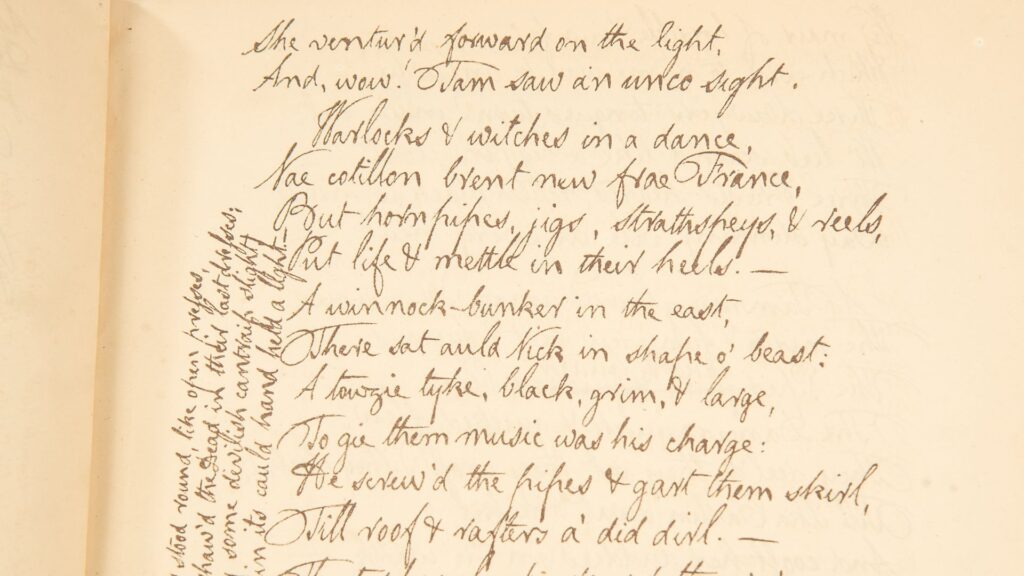
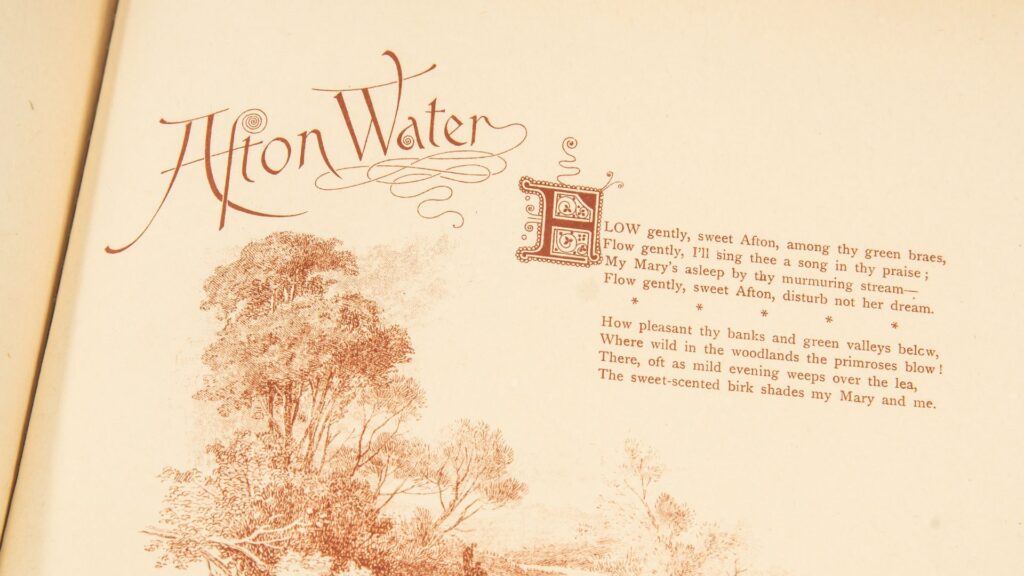
Legacy
In the late 18th century, Belfast was a thoroughly Ulster-Scots town, Presbyterian in religion and braid Scotch in speech. When a French aristocrat, Le Chevalier de la Tochnaye, visited in 1797, he observed that ‘Belfast has almost entirely the look of a Scotch town and the character of the inhabitants has considerable resemblance to that of the people of Glasgow. The way of speaking is much more Scotch than Irish’.
Naturally, the Ulster-Scots identity of the people shaped the culture of the town, with cultural life having a very Scottish flavour. Nowhere was this more apparent than Belfast people’s love for the works of Robert Burns, whose egalitarian philosophy that ‘a man’s a man for a’ that’ found a ready audience among radically minded Presbyterians. It was into this very Ulster-Scots context that Andrew Gibson arrived to live and work, fitting easily, like generations of Scots migrants before and since, into a social and cultural scene where he felt very much at home.
The great Burns collection that Gibson built, one of the largest in the world outside of Scotland, is a cultural treasure, providing proof positive of the identity which led the Irish News to write:
Nights with Burns are all the fashion,
Said the host, our Province o’er;
Bonny Scotland is our passion,
Ulster-Scots we to the core!
It is no surprise that it should reside within another cultural treasure, The Linen Hall, an institution which links our city directly with its radical, Scotch-speaking, Ulster-Scots heritage.
The Ulster-Scots Agency has been pleased to support the continuing restoration of the Gibson collection, one of Belfast’s hidden gems. The collection’s role in securing museum accreditation for the Library shows the significant cultural impact that appreciation for Ulster-Scots identity can have and the importance of ensuring that it is valued by current and future generations.
Ian Crozier – Chief Executive, Ulster-Scots Agency






